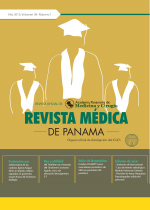Evaluación y tratamiento del trastorno motor en niños con parálisis cerebral: perspectiva neuroquirúrgica

Autores/as
DOI:
https://doi.org/10.37980/im.journal.rmdp.20232205Palabras clave:
Parálisis Cerebral, Espasticidad muscular, TerapiaResumen
La parálisis cerebral (CP, por sus siglas en inglés) es un trastorno crónico resultado del desarrollo anormal del cerebro que causa una variedad de trastornos permanentes del movimiento y del tono postural. Los síntomas pueden variar según el tipo de trastornos motores que se presenten y, a menudo, resultan en limitaciones en la actividad y dependencia total de los cuidadores. Aunque la CP se diagnostica clínicamente, la tecnología permite dividir los resultados de la resonancia magnética en niños con CP en cinco grupos según el sistema de clasificaciónn de imágenes por resonancia magnética para una mejor comprensión de la afección cerebral. El tratamiento es altamente complejo y requiere un manejo multidisciplinario para asegurar la mejor calidad de vida posible. Las técnicas neuroquirúrgicas pueden ser parte del plan de tratamiento para mejorar la calidad de vida del niño y su familia.
Archivos adicionales
Publicado
Número
Sección
Licencia
Derechos de autor 2023 Infomedic Intl.Derechos autoriales y de reproducibilidad. La Revista Médica de Panama es un ente académico, sin fines de lucro, que forma parte de la Academia Panameña de Medicina y Cirugía. Sus publicaciones son de tipo acceso gratuito de su contenido para uso individual y académico, sin restricción. Los derechos autoriales de cada artículo son retenidos por sus autores. Al Publicar en la Revista, el autor otorga Licencia permanente, exclusiva, e irrevocable a la Sociedad para la edición del manuscrito, y otorga a la empresa editorial, Infomedic International Licencia de uso de distribución, indexación y comercial exclusiva, permanente e irrevocable de su contenido y para la generación de productos y servicios derivados del mismo. En caso que el autor obtenga la licencia CC BY, el artículo y sus derivados son de libre acceso y distribución.






